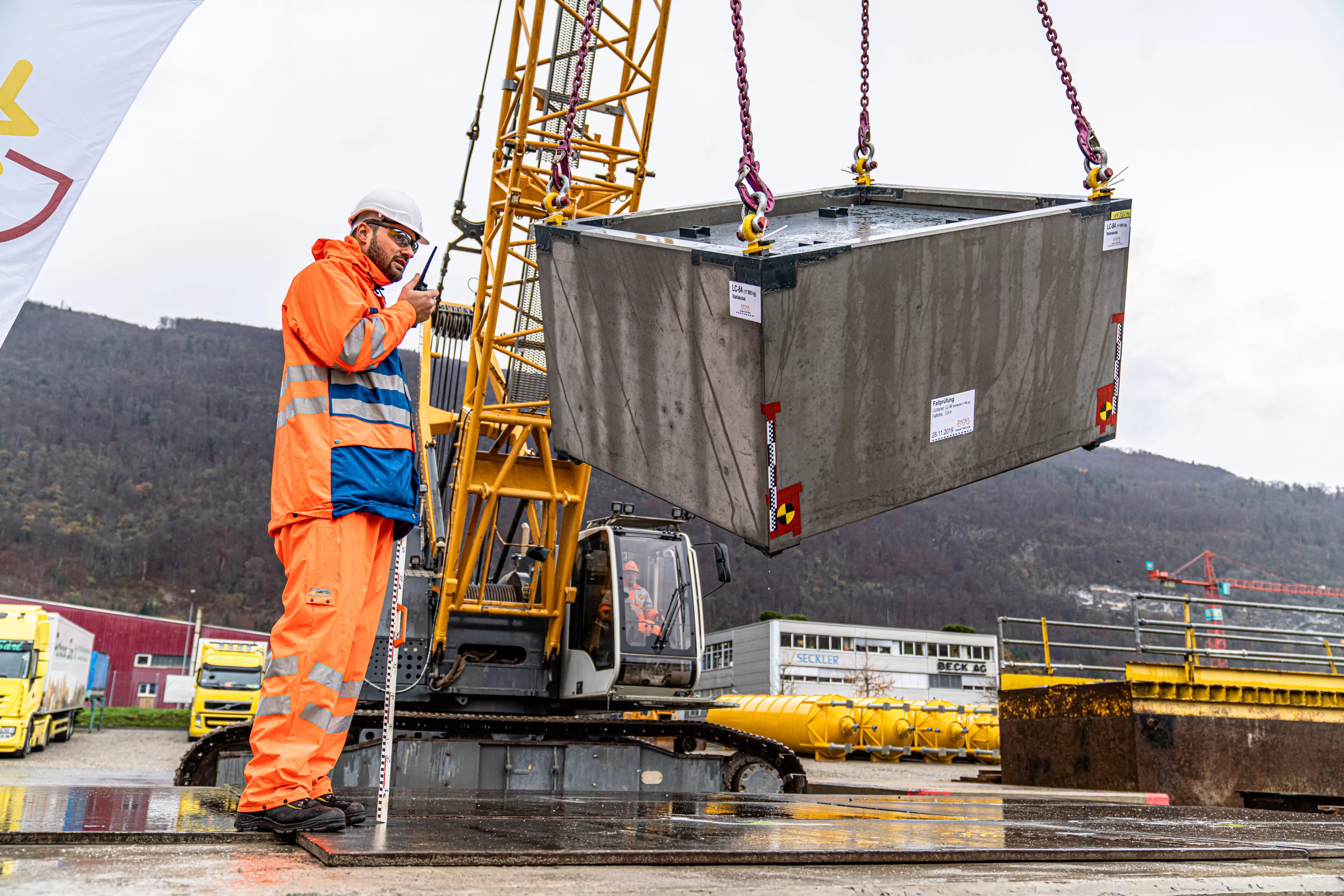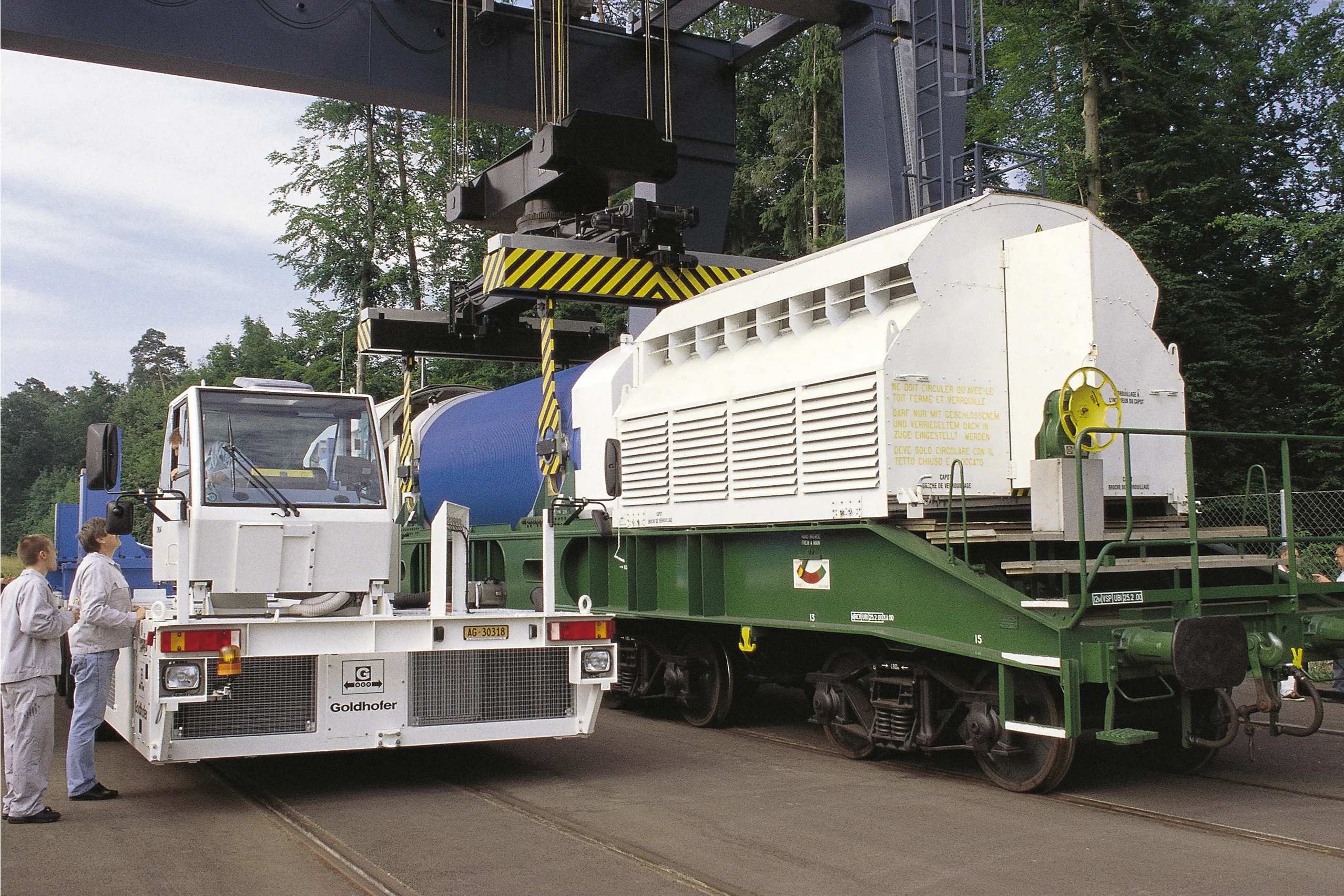Safe transport of radioactive waste – today and in the future
There is already a need today to transport radioactive waste to an interim storage facility by rail and road. For example, spent fuel assemblies already have to be transported from the nuclear power plants to the interim storage facility. Eventually, all waste will have to be transported from the interim storage facilities to the surface facility of a deep geological repository. Every transport requires a permit. The corresponding, internationally recognised stipulations are anchored in the legislation of the involved countries. Radioactive waste has to be securely enclosed at all times and may not pose any threat to humans and the environment.

Testing waste containers
The transport containers for vitrified high-level waste from reprocessing and for spent fuel assemblies are subjected to rigorous testing. They have to be able to withstand a free fall from a height of nine metres onto a hard surface and a half-hour fire test with an average flame temperature of at least 800 °C.
The concrete containers for low- and intermediate-level waste also have to comply with nationally and internationally recognised norms and regulations. To demonstrate their suitability for transport, a number of experiments are required such as a drop test and additional calculations. For the drop tests (see photo), containers weighing between 15 and 25 tonnes are dropped onto a steel plate. The containers have to withstand this fall with their contents intact and without the shielding effect of the concrete being impaired.
The infrastructure and technology for the transport of radioactive waste are already in place, and much experience has already been gained from regularly transporting radioactive waste on the public rail and road network for decades.
Safe transport of radioactive waste
Radioactive waste is not directly disposed of where it is produced. Instead, it has to be transported to an interim storage facility and, eventually, from there to a deep geological repository. To this end, the waste is enclosed in tried-and-tested and extremely robust transport and storage casks. Radioactive waste is already routinely and safely transported by rail and on roads.
